- Home
- Elizabeth Gaskell
Wives and Daughters
Wives and Daughters Read online
Wives and Daughters
Elizabeth Gaskell
Table of Contents
FROM THE PAGES OF WIVES AND DAUGHTERS
Title Page
Copyright Page
ELIZABETH GASKELL
THE WORLD OF ELIZABETH GASKELL AND WIVES AND DAUGHTERS
Introduction
CHAPTER 1 - The Dawn of a Gala Day
CHAPTER 2 - A Novice among the Great Folk
CHAPTER 3 - Molly Gibson’s Childhood
CHAPTER 4 - Mr. Gibson’s Neighbours
CHAPTER 5 - Calf-Love
CHAPTER 6 - A Visit to the Hamleys
CHAPTER 7 - Foreshadows of Love Perils
CHAPTER 8 - Drifting into Danger
CHAPTER 9 - The Widower and The Widow
CHAPTER 10 - A Crisis
CHAPTER 11 - Making Friendship
CHAPTER 12 - Preparing for the Wedding
CHAPTER 13 - Molly Gibson’s New Friends
CHAPTER 14 - Molly Finds Herself Patronized
CHAPTER 15 - The New Mamma
CHAPTER 16 - The Bride at Home
CHAPTER 17 - Trouble at Hamley Hall
CHAPTER 18 - Mr. Osborne’s Secret
CHAPTER 19 - Cynthia’s Arrival
CHAPTER 20 - Mrs. Gibson’s Visitors
CHAPTER 21 - The Half-Sisters
CHAPTER 22 - The Old Squire’s Troubles
CHAPTER 23 - Osborne Hamley Reviews His Position
CHAPTER 24 - Mrs. Gibson’s Little Dinner
CHAPTER 25 - Hollingford in a Bustle
CHAPTER 26 - A Charity Ball
CHAPTER 27 - Father and Sons
CHAPTER 28 - Rivalry
CHAPTER 29 - Bush-Fighting
CHAPTER 30 - Old Ways and New Ways
CHAPTER 31 - A Passive Coquette
CHAPTER 32 - Coming Events
CHAPTER 33 - Brightening Prospects
CHAPTER 34 - A Lover’s Mistake
CHAPTER 35 - The Mother’s Manœuvre
CHAPTER 36 - Domestic Diplomacy
CHAPTER 37 - A Fluke, and What Came of It
CHAPTER 38 - Mr. Kirkpatrick, Q.C.
CHAPTER 39 - Secret Thoughts Ooze Out
CHAPTER 40 - Molly Gibson Breathes Freely
CHAPTER 41 - Gathering Clouds
CHAPTER 42 - The Storm Bursts
CHAPTER 43 - Cynthia’s Confession
CHAPTER 44 - Molly Gibson to the Rescue
CHAPTER 45 - Confidences
CHAPTER 46 - Hollingford Gossips
CHAPTER 47 - Scandal and Its Victims
CHAPTER 48 - An Innocent Culprit
CHAPTER 49 - Molly Gibson Finds a Champion
CHAPTER 50 - Cynthia at Bay
CHAPTER 51 - ‘Troubles Never Come Alone’
CHAPTER 52 - Squire Hamley’s Sorrow
CHAPTER 53 - Unlooked-For Arrivals
CHAPTER 54 - Molly Gibson’s Worth is Discovered
CHAPTER 55 - An Absent Lover Returns
CHAPTER 56 - ‘Off with the Old Love, and On with the New’
CHAPTER 57 - Bridal Visits and Adieux
CHAPTER 58 - Reviving Hopes and Brightening Prospects
CHAPTER 59 - Molly Gibson at Hamley Hall
CHAPTER 60 - Roger Hamley’s Confession
CONCLUDING REMARKS BY THE EDITOR OF THE CORNHILL MAGAZINE
ENDNOTES
INSPIRED BY WIVES AND DAUGHTERS
COMMENTS & QUESTIONS
FOR FURTHER READING
FROM THE PAGES OF WIVES AND DAUGHTERS
For the first time in her life, Molly Gibson was to be included among the guests at the Towers. (page 9)
He had not an ounce of superfluous flesh on his bones; and leanness goes a great way to gentility. (page 38)
“To be sure, a stepmother to a girl is a different thing to a second wife to a man!” (page 75)
“She’s at school in France, picking up airs and graces.” (page 123)
She was sent home in the carriage, loaded with true thanks from every one of the family. Osborne ransacked the houses for flowers for her; Roger had chosen her out books of every kind. The squire himself kept shaking her hand, without being able to speak his gratitude, till at last he had taken her in his arms, and kissed her as he would have done a daughter. (page 212)
“Such a shabby thing for a duchess I never saw; not a bit of a diamond near her! They’re none of ’em worth looking at except the countess, and she’s always a personable woman, and not so lusty as she was. But they’re not worth waiting up for till this time o’ night.” (pages 291-292)
During all the months that had elapsed since Mrs. Hamley’s death, Molly had wondered many a time about the secret she had so unwittingly become possessed of that last day in the Hall library. It seemed so utterly strange and unheard-of a thing to her inexperienced mind, that a man should be married, and yet not live with his wife—that a son should have entered into the holy state of matrimony without his father’s knowledge, and without being recognized as the husband of some one known or unknown by all those with whom he came in daily contact, that she felt occasionally as if that little ten minutes of revelation must have been a vision in a dream. (page 318)
Just then she heard nearer sounds; an opened door, steps on the lower flight of stairs. He could not have gone without even seeing her. He never, never would have done so cruel a thing—never would have forgotten poor little Molly, however happy he might be. (page 371)
“Madam your wife and I didn’t hit it off the only time I ever saw her. I won’t say she was silly, but I think one of us was silly, and it wasn’t me.” (page 390)
“I wish I could give you a little of my own sensitiveness, for I have too much for my happiness.” (page 425)
Having anything to conceal was so unusual—almost so unprecedented a circumstance with her that it preyed upon her in every way. (page 482)
“People may flatter themselves just as much by thinking that their faults are always present to other people’s minds as if they believe that the world is always contemplating their individual charms and virtues.” (page 534)
“Sometimes one likes foolish people for their folly, better than wise people for their wisdom.” (page 582)
“My dear, if you must have the last word, don’t let it be a truism.” (page 634)
BARNES & NOBLE CLASSICS
NEW YORK.
Published by Barnes & Noble Books
122 Fifth Avenue
New York, NY 10011
www.barnesandnoble.com/classics
Wives and Daughters was serialized in Cornhill Magazine between August 1864 and January 1866, and then published in volume form in 1866.
Published in 2005 by Barnes & Noble Classics with new
Introduction, Notes, Biography, Chronology, Inspired By,
Comments & Questions, and For Further Reading.
Introduction, Notes, and For Further Reading
Copyright © 2005 by Amy M. King.
Note on Elizabeth Gaskell, The World of Elizabeth Gaskell and
Wives and Daughters, Inspired by Wives and Daughters, and Comments & Questions
Copyright © 2005 by Barnes & Noble, Inc.
All rights reserved. No part of this publication may be reproduced or transmitted in any form or by any means, electronic or mechanical, including photocopy, recording, or any information storage and retrieval system, without the prior written permission of the publisher.
Barnes & Noble Classics and the Barnes & Noble Classics colophon are trademarks of Barnes & Noble, Inc.
Wives and Daughters
ISBN-13: 978-1-59308-257-4 ISBN-10: 1-59308-257-6
eISBN : 978-1-411-43352-6
LC Control Number 2004112107
; Produced and published in conjunction with:
Fine Creative Media, Inc.
322 Eighth Avenue
New York, NY 10001
Michael J. Fine, President and Publisher
Printed in the United States of America
QM
3 5 7 9 10 8 6 4 2
ELIZABETH GASKELL
Elizabeth Cleghorn Stevenson was born in London in 1810, the daughter of Unitarian parents. Her father chose a variety of different careers, including experimental farming, preaching in the Unitarian church, and writing for various periodicals. Her mother died the year after Elizabeth was born, and of the eight children she bore, only two survived childhood. Elizabeth was raised by her maternal Aunt, Hannah Holland Lumb, whose farm in rural Knutsford provided a serene and happy childhood for the young girl. Unitarians believed in education for girls, and after lessons at home Elizabeth was further educated at a high-quality, progressive boarding school.
Elizabeth’s ties to her brother John were kept up through letters and occasional visits. After setting sail for India in 1828, he disappeared without a trace, leaving Elizabeth stunned and her father in deep depression. His failing health compelled Elizabeth to travel to London to nurse him until his death the following year. After his death, Elizabeth visited a variety of cultured and interesting family members, and met William Gaskell, an assistant Unitarian preacher in Manchester, whom she wed in 1832.
Although the Industrial Revolution thrummed in the background of her childhood, it was William’s Manchester congregation that first put Gaskell in touch with the grim realities of factory work. Cotton mills dominated the labor force in the city, and filthy shanty towns housed thousands of exploited, undernourished mill workers. William and Elizabeth were kept busy by their congregation and by their efforts to address the social problems that plagued the booming industrial city of Manchester. Although she had written only personal diaries, and was also busy raising her own family in the early years of her marriage, Gaskell’s community work inspired her to collaborate with her husband on the narrative poem “Sketches Among the Poor, No. 1,” which was published in 1837.
Gaskell’s happy, busy life was interrupted by tragedy in 1845 when her infant son died of scarlet fever while on a family vacation. Overcome by grief, Gaskell followed her husband’s advice and became absorbed in her writing. The result was her first novel, Mary Barton: A Tale of a Manchester Life (1848), which earned her instant success—and hostile criticism from the cotton mill owners whom she so unsentimentally portrayed. Gaskell, a prolific writer, went on to write six other novels: Cranford (1853), Ruth (1853), North and South (1855), Sylvia’s Lovers (1863), Cousin Phyllis (1864), and Wives and Daughters (1866). She also wrote numerous short stories, as well as a famous biography of her friend Charlotte Brontë, The Life of Charlotte Brontë (1857). Much of Gaskell ’s short fiction appeared in popular literary journals, and several of her novels were serialized in those publications. Gaskell’s works were popular during her life and esteemed by the critics. Friendships with literary giants of the day—including Charles Dickens, who also published her work in his journals—aided her career, and frequent travels throughout Europe gave her material for her writing and eased the strains of an extremely busy life. Gaskell had six children, four of whom, all daughters, lived to be adults.
In 1865 Gaskell bought a country house in Hampshire as a surprise for her husband’s retirement. By then her last novel, Wives and Daughters, was being serialized in the Cornhill Magazine. Physically exhausted, and yet to complete the final installment of her novel, Elizabeth Gaskell died suddenly on a visit to the house on November 12, 1865. Although never completed, Wives and Daughters is considered by many to be a study in character on a par with the novels of George Eliot and Jane Austen. Elizabeth Gaskell was buried at Brook Street Chapel in Knutsford.
THE WORLD OF ELIZABETH GASKELL AND WIVES AND DAUGHTERS
1799-1800 British legislation, the Combination Acts, makes trade unions illegal. 1800 The Napoleonic Wars begin 1810 Elizabeth Cleghorn Stevenson is born on September 29 in London to Unitarian parents. She is her parents’ eighth and last child. 1811 Her mother dies, and Elizabeth is taken in by her mother’s sister, Hannah Holland Lumb, in the town of Knutsford in Cheshire. Jane Austen’s Sense and Sensibility is published. 1812 Charles Dickens, future publisher and friend of Elizabeth Gaskell, is born. 1814 Elizabeth’s father remarries. Elizabeth remains in Knutsford with her aunt. 1815 Anthony Trollope is born. A new Corn Law imposes duties on foreign crops as a measure to protect British farmers, but the protection is unpopular, as bread prices rise. The Napoleonic Wars end with the Battle of Waterloo. 1816 Charlotte Brontë is born; Elizabeth Gaskell will later write her biography. 1817 Weavers and spinners in Manchester organize a “hunger march” to London to seek aid from the government in response to Manchester’s failing cotton trade. 1819 Victoria, the future queen, is born. Novelist George Eliot (pseudonym of Mary Ann Evans) is born. John Keats’s “Ode to a Nightingale” is published. 1820 Percy Bysshe Shelley’s Prometheus Unbound is published. 1822 Elizabeth enters the liberal-minded Avonbank School at Stratford-on-Avon, where she spends the next five years absorbed in her studies. She receives an excellent education, unlike many girls in her generation. 1824 The Combination Acts are repealed. 1828 Tragedy grips the Stevenson family when John disappears on a trip with the East India Company to India. Elizabeth travels to London to nurse her father, whose health is deteriorating. 1829 William Stevenson dies, and Elizabeth lives with a distant relative, Unitarian minister William Turner. She is exposed to a socially progressive and intellectual way of life that will inform her fictional works. 1830 Modern rail travel begins in England. 1831 On a trip to Manchester, Elizabeth meets her future husband, William Gaskell, an assistant minister at an important Unitarian center, the Cross Street Chapel. 1832 Elizabeth and William Gaskell marry in Knutsford. After their honeymoon in Wales, they reside in Manchester. The First Reform Act redistributes parliamentary seats and extends voting rights for the middle classes. 1833 Elizabeth suffers the stillborn birth of her first child. The British Factory Act limits the number of hours a child under eighteen can work in a textile factory and allows inspections to enforce the law. Slavery is abolished in the British Empire. 1834 A daughter, Marianne, is born. 1836 She writes the poem “On Visiting the Grave of My Stillborn Little Girl, Sunday July 4th, 1836.” Chartism, a British working-class movement to reform Parliament, is founded. 1837 The narrative poem “Sketches Among the Poor, No. 1,” which Gaskell wrote with her husband, is published by Blackwood’s Edinburgh Magazine. A daughter, Margaret Emily, known as Meta, is born. Queen Victoria assumes the throne of England. 1838 Dickens’s Oliver Twist is published. 1840 “Clopton Hall,” a short essay recalling a visit to Clopton House during Gaskell’s school days, is included in William Howitt’s Visits to Remarkable Places. Thomas Hardy is born. 1842 A daughter, Florence, is born. 1843 William Wordsworth is appointed poet laureate. 1844 A son, William, is born. 1845 While on family vacation in Wales, the infant William contracts scarlet fever and dies. Elizabeth distracts herself from her grief by focusing on her writing. Friedrich Engels’s Die Lage der arbeitenden Klasse in England (The Condition of the Working Class in England) is published. 1846 A daughter, Julia Bradford, is born. All Corn Laws are repealed. 1847 “Libbie Marsh’s Three Eras” appears in Howitt’s Journal, published by fellow Unitarian William Howitt. Charlotte Brontë’s Jane Eyre is published. The 1847 Factory Act shortens the work-day of women and children to a maximum of ten hours. 1848 Gaskell’s first novel, Mary Barton: A Tale of a Manchester Life, is published anonymously, although the author’s identity is immediately uncovered. The sympathetic portrait of mill workers and their unbearable living conditions infuriates Manchester factory owners. Karl Marx and Friedrich Engels’s Manifest der Kommunistischen Partei (Communist Manifesto) is published. Major rebellions take place in France, Austria, Prussia, and other European countries. William Makepeace Thackeray’s Vanity Fair is pub
lished. 1849 Gaskell’s writing finds many admirers, and she meets Dickens, Thackeray, and Wordsworth, among other well-known authors. 1850 Elizabeth meets Charlotte Brontë, and the two become close friends. Several works, including “The Heart of John Middle-ton,” are published in Charles Dickens’s weekly journal Household Words. The Moorland Cottage, a long short story, is published in book form. 1851 The first two chapters of Cronford—often considered Gaskell’s most popular work—are published in Household Words (the final installments will appear in 1853). “The Deserted Mansion” appears in Fraser’s Magazine. 1853 Ruth is published in book form; the novel stirs controversy because it questions the conventional wisdom that the life of a “fallen woman” necessarily ends in ruin. Cranford is published in book form. The stories “Cumberland Sheep Shearers” and “The Squire’s Story,” among others, appear in Household Words. 1854 The novel North and South, which addresses societal problems, is serialized in Household Words. Gaskell meets Florence Nightingale in London. 1855 Charlotte Brontë dies. Her father asks Gaskell to write Charlotte’s biography. North and South is published in book form. Household Words publishes “An Accursed Race” and “Half a LifeTime Ago.” A group of Gaskell’s short stories is published as the book Lizzie Leigh and Other Stories. Scottish missionary and explorer David Livingstone reaches Victoria Falls on the Zambezi River. 1857 The Life of Charlotte Brontë is published. Although it is praised by most, some individuals depicted in the work threaten legal action over the way they are portrayed. The Matrimonial Causes Act enables women to inherit, own, and bequeath property. 1858 “The Doom of the Griffiths” appears in the American monthly Harper’s New Monthly Magazine. “My Lady Ludlow” and other short stories are published in Household Words. 1859 Round the Sofa and Other Tales, a book of short stories, is published. Several short stories appear in All the Year Round, Dickens’s new weekly magazine. Darwin’s On the Origin of Species and Dickens’s A Tale of Two Cities are published. 1860 Right at Last and Other Tales, a book of short stories, is published. 1861 The American Civil War begins. 1862 “Six Weeks at Heppenheim” is published in the Cornhill Magazine. 1863 “A Dark Night’s Work” appears in All the Year Round. Cousin Phillis, a short novel, is serialized in the Cornhill Magazine, to be concluded early in 1864. The story’s country setting prefigures a more detailed portrait in Wives and Daughters. The novel Sylvia’s Lovers, set in Napoleon’s time, is published. 1864 The first installments of Wives and Daughters appear in the Cornhill Magazine. The novel evokes the pastoral setting of Gaskell’s girlhood country home. 1865 As a surprise for her husband’s future retirement, Gaskell buys a country house in Hampshire with the proceeds from her writing. Physically exhausted, and yet to complete the final installment of her novel, Gaskell dies suddenly on a visit to the house on November 12. She is buried at Brook Street Chapel in Knutsford. 1866 The serial publication of Wives and Daughters ends. In lieu of the novel’s last installment, the editor of the Cornhill Magazine writes a note that explains how he thinks the author would have completed the book. The novel is released in book form.

 Lizzie Leigh
Lizzie Leigh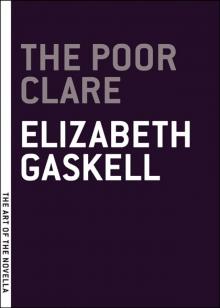 The Poor Clare
The Poor Clare Lois the Witch
Lois the Witch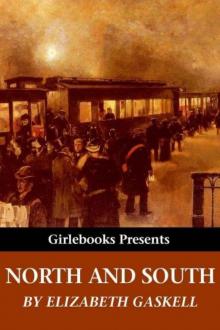 North and South
North and South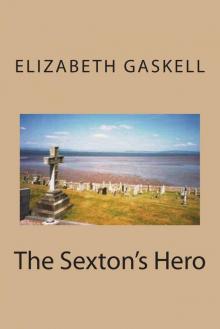 Sexton's Hero
Sexton's Hero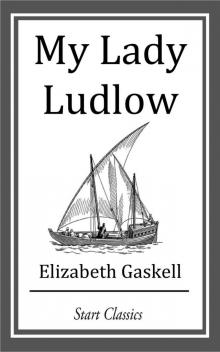 My Lady Ludlow
My Lady Ludlow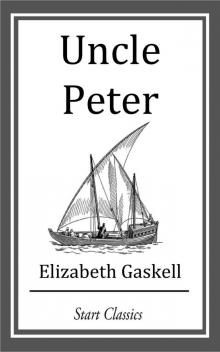 Uncle Peter
Uncle Peter Sylvia's Lovers Elizabeth Cleghorn Gaskell
Sylvia's Lovers Elizabeth Cleghorn Gaskell Delphi Complete Works of Elizabeth Gaskell
Delphi Complete Works of Elizabeth Gaskell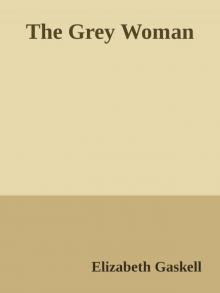 The Grey Woman
The Grey Woman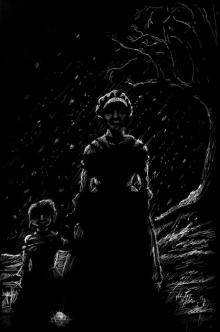 The Old Nurse's Story and Other Tales
The Old Nurse's Story and Other Tales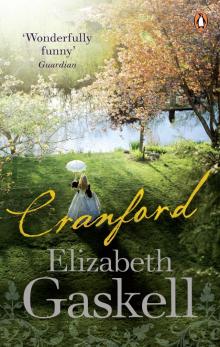 Cranford
Cranford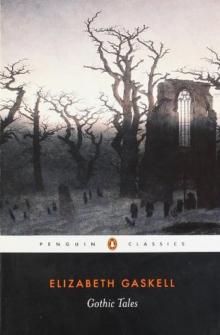 Gothic Tales
Gothic Tales Some Passages From the History of the Chomley Family
Some Passages From the History of the Chomley Family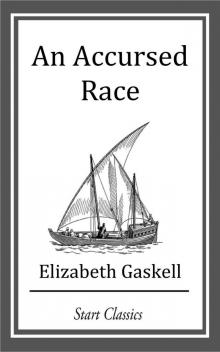 An Accursed Race
An Accursed Race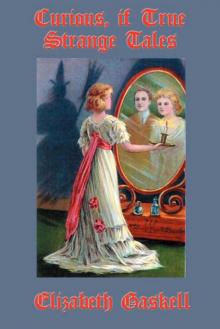 Curious, if True: Strange Tales Elizabeth Cleghorn Gaskell
Curious, if True: Strange Tales Elizabeth Cleghorn Gaskell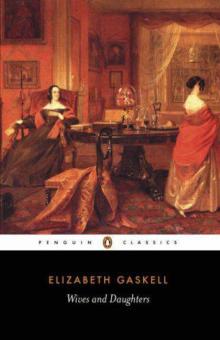 Wives and Daughters
Wives and Daughters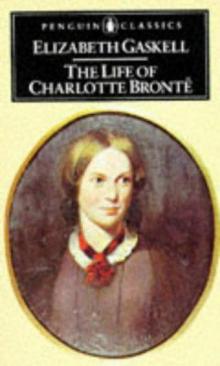 The life of Charlotte Brontë
The life of Charlotte Brontë